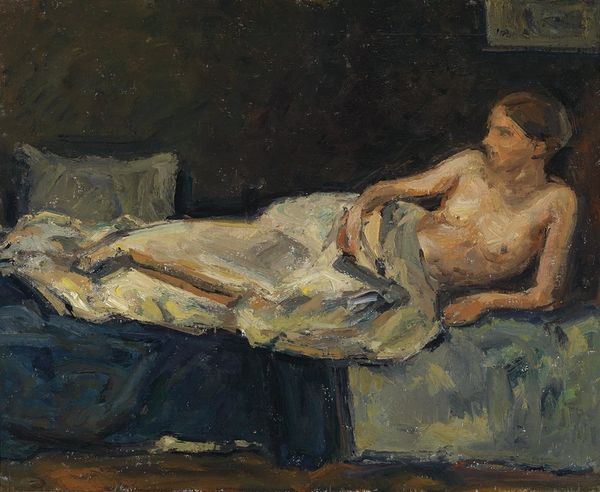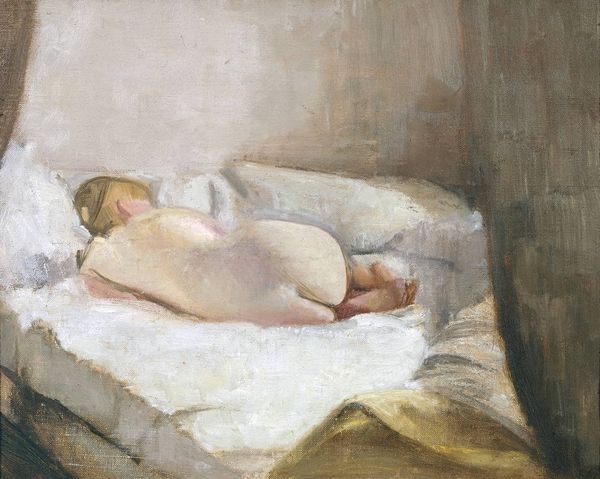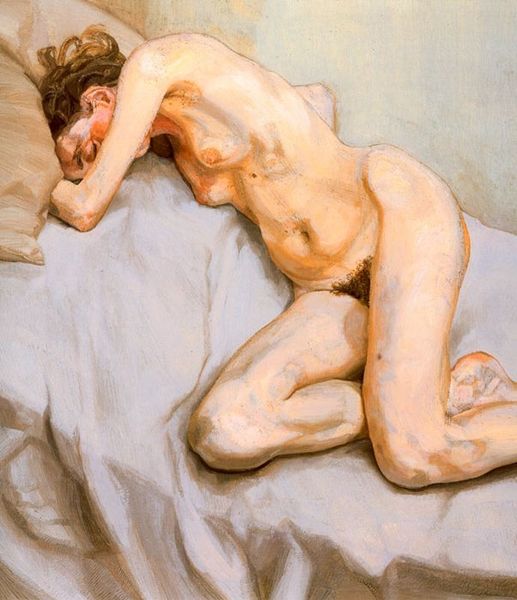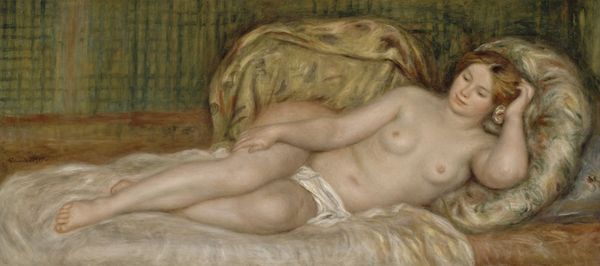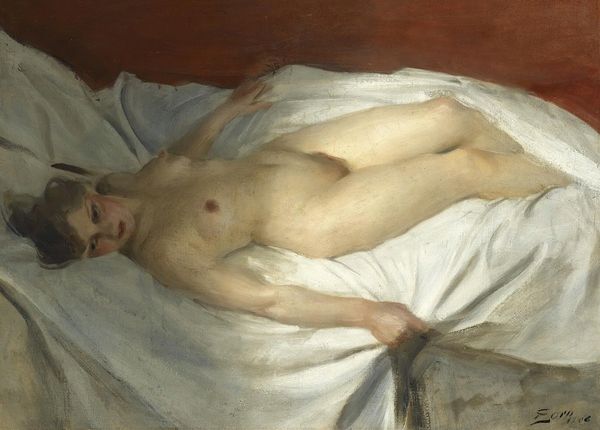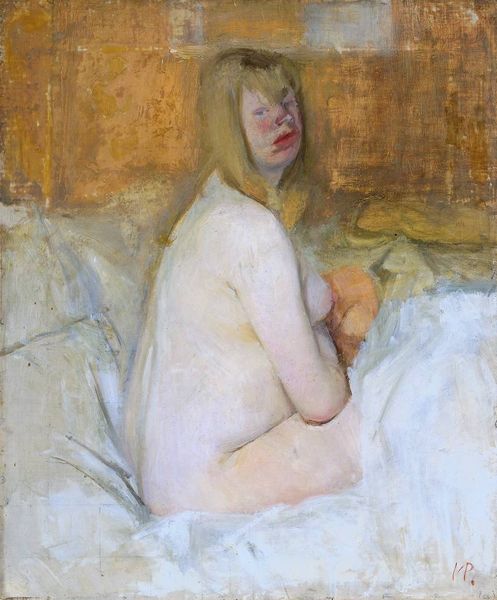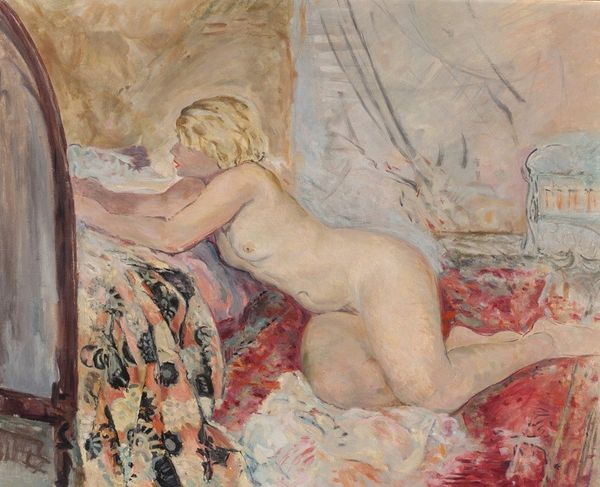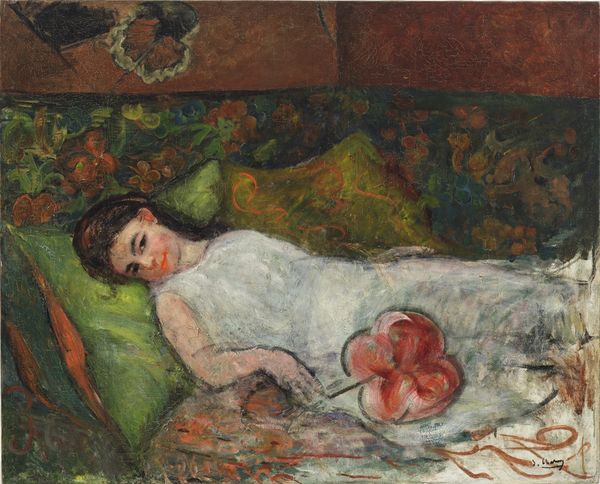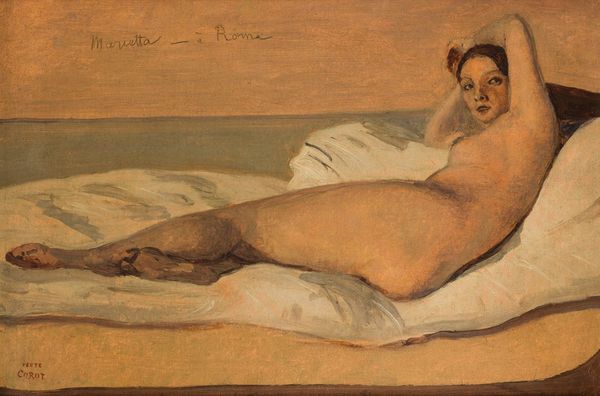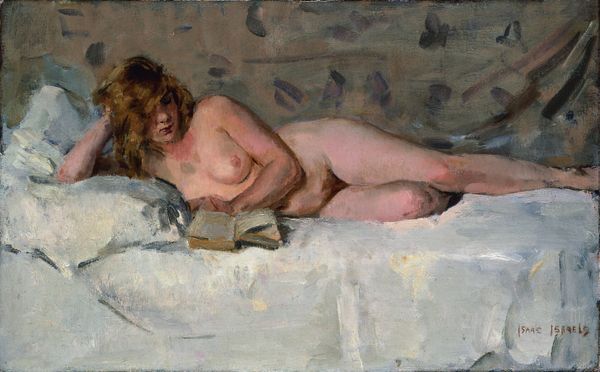
Dimensions: support: 546 x 652 mm frame: 595 x 704 x 63 mm
Copyright: © The estate of Adrian Stokes | CC-BY-NC-ND 4.0 DEED, Photo: Tate
Editor: Here we have Adrian Stokes's oil on canvas, "Nude Lying," housed at the Tate. The soft, muted palette gives it a dreamlike quality. How do you read this work? Curator: Stokes was deeply interested in psychoanalysis. Consider the societal restrictions on the nude during his time. Could this painting be a challenge to those constraints? A quiet rebellion, perhaps? Editor: Interesting. I hadn’t thought about it in terms of social commentary. Curator: Or is it more personal? A study of form and texture, framed within the debates on representation of the human body? Editor: It is clearly more complex than it looks. Curator: Exactly. Art often operates on multiple levels, reflecting both personal vision and the surrounding culture. Editor: Thanks, I will certainly be thinking of this work differently from now on.
Comments
Join the conversation
Join millions of artists and users on Artera today and experience the ultimate creative platform.
tate 7 months ago
⋮
In his 'Reflections on the Nude' (1967) Stokes wrote: 'There is a sense in which all art is of the body'. He explained that, whatever the motif, forms created on a surface can be seen as representing 'the actualities of the hidden psychic structure made up of evaluations and phantasies with corporeal content'. In his paintings from the model, such as this, Stokes examined the progression of forms revealed in an even light and celebrated the autonomy of the body. Stokes's figure painting began at the Euston Road School in 1937. His teacher there, William Coldstream, painted many of his late works, including nudes, in Stokes's house after his death. Gallery label, September 2004
